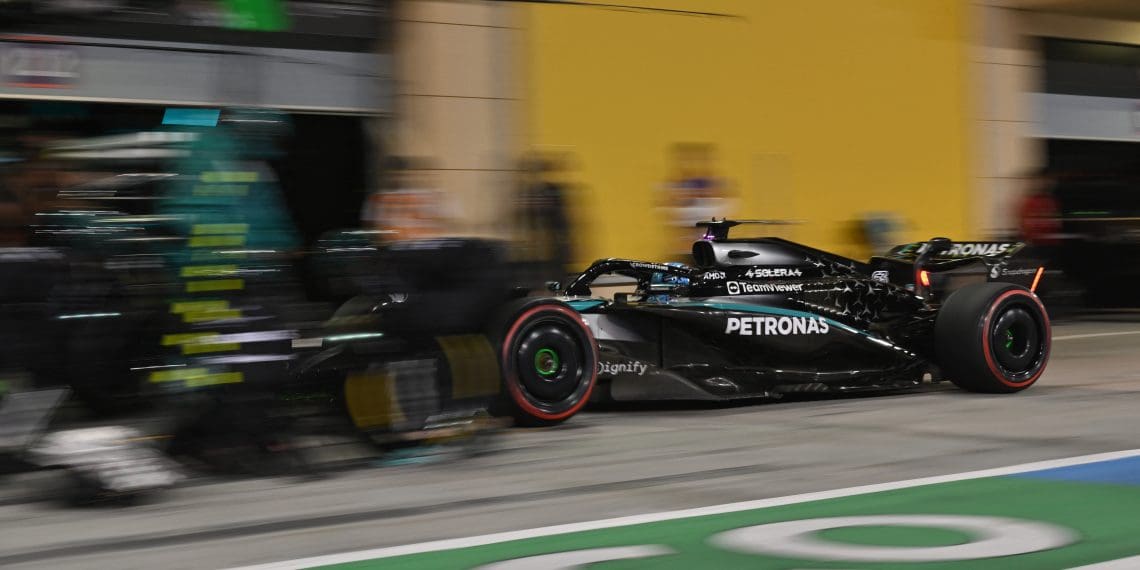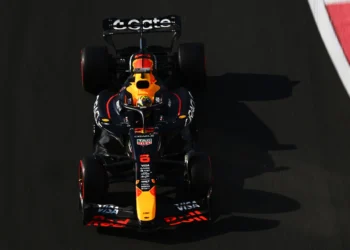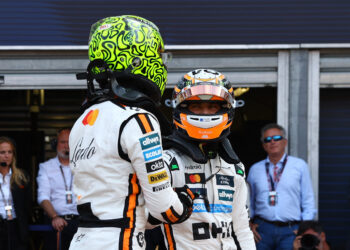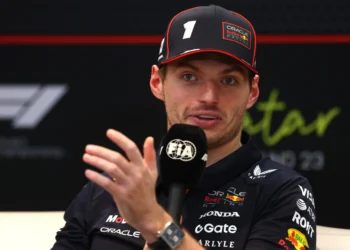The scandalous case of DRS-Russell: Unveiling the controversy and historical precedents
In a jaw-dropping turn of events, George Russell finds himself summoned by the officials for the unauthorized activation of the DRS. Let’s delve into the unfolding drama and the past precedents that seem to favor him. Russell’s illicit activation of the Drag Reduction System during the Bahrain Grand Prix continues to spark debates in the Formula 1 world. While battling it out with Leclerc and Norris for second place, the British driver mistakenly deployed the rear wing on the straight between turns 10 and 11. Immediately owning up to his mistake over the radio, Russell claimed he was merely trying to communicate with the pit wall and did not gain any advantage from the slip-up.
Amidst the chaos, the Mercedes #63 encountered a glitch with the FIA control unit in the latter part of the race, causing disruptions even on the timing screen, which inexplicably excluded Russell. Alerting the team to a DRS malfunction, Russell was instructed to initiate a default procedure to switch off the automatic mode and enable manual activation. Consequently, the responsibility for any misuse fell squarely on the driver, who allegedly triggered the DRS on a couple of occasions, albeit for a few meters. The Race Direction promptly launched an investigation into Russell, officially summoning him to present his defense after the podium ceremony.
“It was clearly a technical issue. The DRS was probably open for less than a second, so – in Russell’s words – I don’t know how it got triggered. There were all kinds of problems with the transponder and the signal to the car. Honestly, I can’t give you an answer because I was also losing all the information on the steering wheel, I had no data. I lost everything, so I was really compromised in the last stint. It would be really harsh if something happened (with the stewards, editor’s note).”
Looking back at similar incidents in Formula 1’s DRS era, Russell finds solace in the lack of past penalties for such infractions. The most recent case dates back to approximately seven years ago, precisely during the 2018 Azerbaijan Grand Prix. In Baku, Lance Stroll, Kevin Magnussen, and Sergio Perez came under scrutiny for the unauthorized activation of the rear wing, also due to a system malfunction that necessitated a switch to manual mode. All three drivers were cleared of any wrongdoing since “no car was overtaken through the incorrect use of the DRS,” with Perez even retaining his podium finish with Force India.
In 2013, Fernando Alonso also got embroiled in a similar dispute for activating the DRS three times during the Hungarian Grand Prix. Ferrari demonstrated that the Spaniard had received erroneous messages on his steering wheel dashboard, resulting in no penalty for him (although the team was fined €15,000). Going further back in time to 2012 in Valencia, Michael Schumacher mistakenly triggered the rear wing under double waved yellow flags while battling with Webber. Despite the immediate radio report by Red Bull’s Australian driver, Schumacher of Mercedes retained his podium finish, marking the final one of his illustrious career.
As the saga unfolds, the Formula 1 community remains divided over the implications of Russell’s DRS mishap and eagerly anticipates the outcome of the official hearing. Will history repeat itself in favor of the young British talent, or will the stewards deliver a shocking twist in this high-stakes controversy? Stay tuned for more updates on this gripping saga that has captured the attention of motorsport enthusiasts worldwide.










